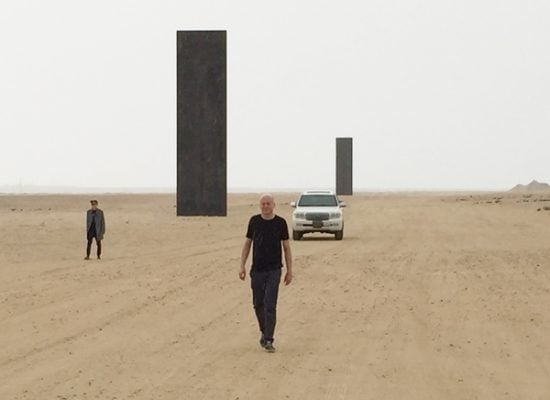Right now Qatar seems to be the world’s biggest customer for art. Just last year, Qatar Museums (formerly known as the Qatar Museums Authority) reportedly spent $1 billion on art purchases and commisions (see Is Qatar’s $1 Billion Arts Spending Not Enough?).
What came out of these extensive commissions and purchases?
Not only did they spend $250 million on a Cézanne in 2012, they also, in February, shelled out $300 million on a Gauguin in what is touted as the most expensive art purchase in history (see Paul Gauguin Painting Sells for Record $300 Million to Qatar Museums in Private Sale), but they also commissioned a new permanent Richard Serra land art installation just outside Doha, the capital.
Serra did an amazing job. You must see it. The work consists of four steel plates that are 15 meters (49 feet) high and stand in the middle of the Qatari desert, alone, in silence separated from other elements of human life or civilization.
About 40 minutes from the city center, the installation is at once sublime and terrifying. The gigantic pillars span 1 km, placed in a natural corridor of sand formed by gypsum plateaus. The artwork, titled “East-West/West-East,” was unveiled last year by Sheikha Al Mayassa.
Serra has said of the work: “The placement (of the pieces) is not geometrical, it’s topological; they can only be placed where they are to achieve the curvature of the land. If one walks through the pieces; he will understand not only the rhythm of himself in relationship to the landscape but also the rhythm of himself in relationship to the height and the length of the pieces.”
